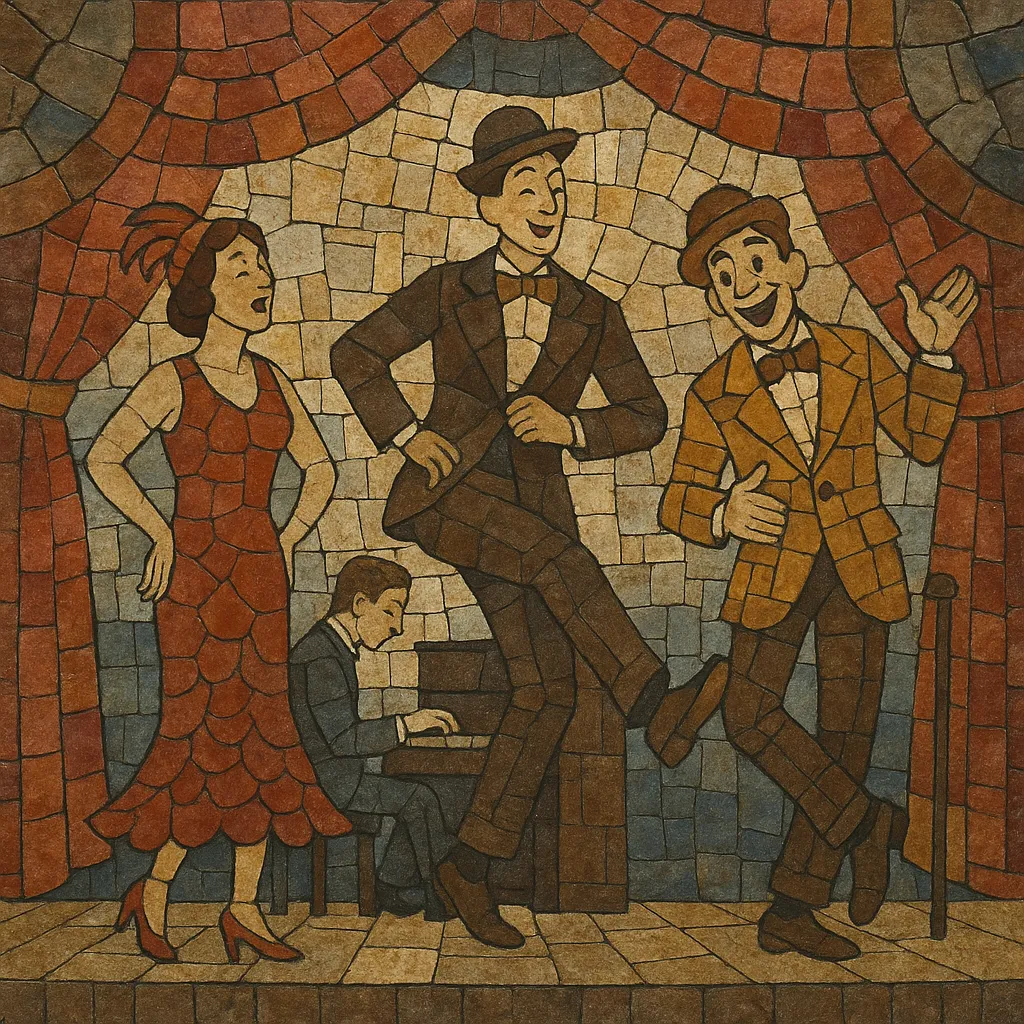
Vaudeville is a late‑19th to early‑20th‑century American variety stage tradition whose musical side blends comic songs, patter numbers, novelty tunes, sentimental ballads, ragtime interludes, and ensemble finales. It emphasized catchy melodies, memorable refrains, and clear diction so songs could land immediately with live audiences.
Typical accompaniment was piano (often with a small pit ensemble of strings, reeds, and light percussion). Song forms favored verse–chorus and 32‑bar AABA structures, with simple diatonic harmony embellished by secondary dominants and ragtime‑style syncopation. Lyrics leaned into topical humor, character monologues, dialect turns (now recognized as historically problematic), and direct audience address.
Unlike bawdier burlesque, vaudeville marketed itself as “family entertainment,” integrating music with comedy, dance, specialty acts, and novelty performance. Its stages and circuits incubated the American popular song, connected sheet‑music publishers with performers, and supplied early film and radio with talent and repertoire.
Vaudeville emerged in the United States in the 1880s as a commercial, “clean” variety format meant for mixed audiences. It drew on British music hall, American minstrelsy and parlor entertainment, operetta lightness, and the new syncopations of ragtime. Song pluggers from Tin Pan Alley quickly recognized vaudeville stages as ideal laboratories for introducing and testing popular songs.
Large booking networks such as the Keith–Albee and Orpheum circuits standardized programming and touring. Bills typically flowed from an opening novelty act to singers, dancers, sketch comedy, and a big ensemble closer. Musical numbers—comic patter, novelty stunts, ragtime turns, and heartfelt ballads—were the glue between acts and a major driver of sheet‑music sales. Many future Broadway and Hollywood figures honed their craft here.
Sound film (the talkies), radio variety, and the rise of fully integrated musical theatre shifted audiences away from live vaudeville bills. By the early 1930s, most circuits had collapsed or converted to movie houses. Yet vaudeville’s song forms, comedic timing, star system, and repertoire fed directly into Broadway show tunes, traditional pop, early radio and television variety, and even genre spin‑offs like vaudeville blues.
The genre helped codify the American popular song (memorable hooks, economical forms, clear storytelling) and performer–audience dynamics (asides, topical references, sing‑along choruses). It remains a foundational chapter in U.S. popular entertainment and music publishing history.

